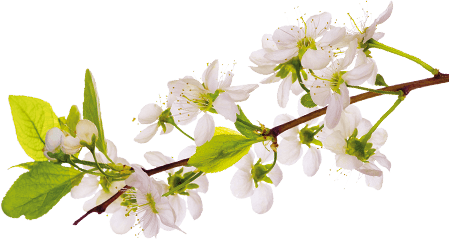Nov 27., 2018 / Everything, Evidence, Foreign Versions
The Adem Chandrian poem in Japanese (and French)- part 2
This is the second of two posts where I talk about insights we might be able to glean from the foreign versions of the Adem’s poem about the Chandrian in WMF. Part 1 covers Cyphus, Stercus, and Ferule (and a hefty dose of theory); this post covers the rest.
For Usnea, it is actually the French that I find most interesting.
JP: ウスニアは朽ちてゆくばかり (Usnea wa kuchite yuku bakari)
Or something to the effect of: Usnea is only falling into decay.
French: Usnea ne vit que de la ruine.
Or: Usnea lives in nothing but ruin.
What is interesting here is the use of ruin versus some other verbs.
You see, Japanese has 朽ちる,(kuchiru) which is pretty much a perfect parallel for the English word decay.
Bodies and trees decay/朽ちる, And while it is a natural process, they are undeniably rotting. But orbits and carbon-14 decay/kuchiru without any connotation of something spoiling or being “unclean.” So it is somewhere in the middle of the connotation scale between “breaking down” and “rotting” even though these verbs can describe the exact same process happening to organic material.
If the French had used the word pourrir, it would have definitely had the connotation of something that was corrupted or “gone bad.” But they used la ruine (ruin), specifically indicating something that falls apart. So basically all three versions are talking about something that falls apart in the way it would with the natural passage of time. This is a strong match for the Collapse card from the Chandrian signs.
There are some interesting findings about the next 2 names as well.
JP: グレイ・ダルセンティは決して話さない。 (GUREI DARUSENTI wa keshite hanasani.)
Translation: Grey Dalcenti never speaks.
Fr: Grave Dalcenti jamais ne dit mot. (Grave Dalcenti never says a word.)
The Japanese phrasing has a strong connotation that Dalcenti DOESN’T speak, not that they can’t speak.
But here is the really interesting part: Just like with Black Dress, the Japanese uses katakana, the phonetic alphabet for foreign words to spell out GUREI- Grey. And unlike dress, grey is not that commonly used, and it’s actually usually spelled differently as グレー. This strongly suggests they didn’t use the Japanese color word hairo (灰色) because the sound of grey is what’s important here. That is backed up by the French text’s use of “grave.” That doesn’t mean grey all (that would be gris). So we’ve learned two important things here: we are talking about someone who could be grey in demeanor as opposed to color, and the sound of the word grey matters.
We see the same thing on the next line:
ペイル・アレンタは荒廃をもたらす (PEIRU ARENTA wa kouhai o motarasu.)
Translation: Pale Alenta brings devastation
Fr: Pâle Alenta porte le fléau
Translation: Pale Alenta brings the plague.
There are several more pointed words for plague or blight in Japanese, (but then again Rothfuss used blight, so…). Honestly, I struggled with their use of 荒廃 (kouhai) ~ devastation, because I am mainly used to seeing that used like in anime or manga for the results of a bomb or the end of the world (always a threat in anime!) or something. I did some research and while I still feel like I don’t have a great grasp of the word’s connotation, I did discover a few things: 1) it is very common to use this word as part of a phrase the effect of “devastated by war” or “devastated by famine” (or disease). So basically it would seem to describe an effect and not a cause. Secondly, the Magic the Gathering card which is titled “Blight” in English is titled 荒廃 (kouhai) in Japanese. So basically while a native speaker might have more insight on what using this word hints at, I can’t really say anything except: yep, it’s a translation of the English blight. Fortunately the French is a lot more helpful. Le fléau is more specifically plague, at least in its most common usage. So this seems like more support for Alenta’s sign being the Sickness Chandrian card.
And again we have the use of katakana for pale. While there are a couple different Japanese words that could have been used here depending on whether they meant a light color or pale skin, none of them would have been the katakana ペイル, which isn’t even the traditional phonetic spelling for pale, that would be ペール. Unquestionably, the sound here is important.
The next line in French is virtually identical to the English, translating to : The last is the master of the seven.
But the Japanese is interestingly more specific than just using the word “last”:
七人目は彼らの主 (nananinme wa karera no omo)
“The seventh person is their lord.” I’m not really sure how much debate there is or isn’t over whether Haliax counts as one of the seven or if he makes eight (I’ve given my opinion on that previously), but this would seem like some really strong evidence for settling that matter if it’s still in question.
And… a bit of an anti-climactic end here, but we must be complete:
The last two lines about Alaxel (アラクセル/ARAKUSERU) are pretty much identical in all three languages. Hated, Hopeless, Sleepless. (The French leaves out sane although the Japanese includes it.) Alaxel wears the shadow’s…
Fr: … harnais (harness)
JP: … 軛 (kubiki) = yoke.












Khaleesi75 / November 28, 2018., 3:30 am
This is awesome! So if we're matching the cards, and Alenta is Sickness and Usnea is Collapse, that would leave Stercus with Death. I had Alenta being Death and I still think it is worth considering that in the 14th century another name for the Bubonic plague was The Back Death. I can't reconcile Stercus with Death though...that's still as confusing as ever.
aethel / January 18, 2020., 1:30 pm
Understanding that Cinder = Stercus is only my pet theory, I think if that's true, then he has a role he played in things that has yet to be revealed that would explain it. He is obviously an important member of the Chandrian from a narrative standpoint.
Serack / July 22, 2019., 9:24 am
Have you seen u/sibiin’s recent work on the Hebrew translations? https://www.reddit.com/r/KingkillerChronicle/comments/cd58ep/information_about_the_lackless_rhyme_1_from/?utm_source=share&utm_medium=ios_app Some of the responses also link other translation topics that have been fruitful. As the website/blog that I refer to for this stuff, do you think you could generate a page dedicated to indexing other people’s work on this stuff?
aethel / January 18, 2020., 1:30 pm
What did you have in mind?